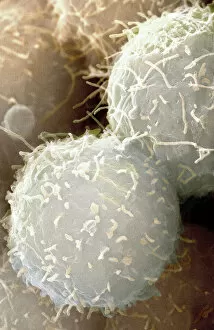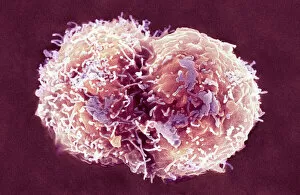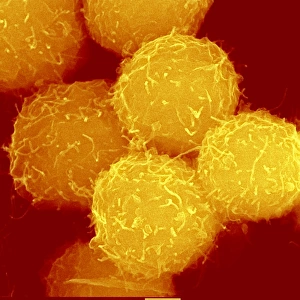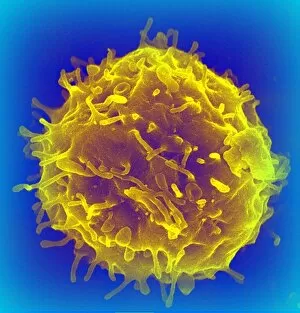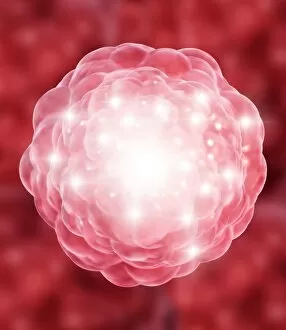Unspecialized Collection
"Unlocking the Potential: Exploring the World Stem Cells through SEM" Intriguing and versatile
All Professionally Made to Order for Quick Shipping
"Unlocking the Potential: Exploring the World Stem Cells through SEM" Intriguing and versatile, stem cells have captivated scientists for their remarkable ability to transform into various cell types. This captivating image showcases unspecialized stem cells under a scanning electron microscope (SEM), offering a glimpse into their intricate structure. The first snapshot reveals mesenchymal stem cells, with their elongated shape and delicate features beautifully highlighted by SEM. These unspecialized powerhouses hold immense potential in regenerative medicine, as they can differentiate into bone, muscle, or fat cells. Moving on to haematopoietic stem cells - depicted both through SEM and artwork - we witness the essence of life itself. With their spherical appearance and intricate network of connections, these unspecialized wonders are responsible for replenishing our blood supply throughout our lives. Returning to mesenchymal stem cells once again captured by SEM, this time showcasing multiple views that emphasize their unique characteristics. Their fibroblast-like morphology hints at their role in tissue repair and regeneration when prompted by specific signals within the body. However, not all is eternal in the world of stem cells. The final images depict dying stem cells under SEM's watchful eye. Even though it may seem disheartening at first glance, this process plays an essential role in maintaining homeostasis within our bodies – eliminating damaged or unnecessary cells to make way for new growth. These mesmerizing glimpses into the realm stem cells remind us of nature's incredible complexity and its endless capacity for renewal. As researchers continue to unravel their secrets using cutting-edge techniques like SEM, we inch closer towards harnessing these tiny miracles' full potential for medical advancements that could revolutionize healthcare as we know it.

